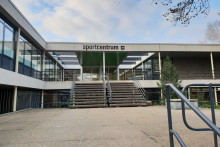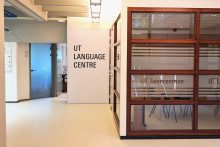Dutch higher education may be on the brink of a major change. There are already indications that new universities will be needed, and the difference between universities of applied sciences and research universities could even disappear altogether.
Context
First some context. The number of Dutch pre-university (VWO) graduates enrolling at universities of applied sciences has been declining for years, which is part of the reason why enrolments in higher professional education are down overall. Universities of applied sciences in regions with shrinking populations will find it especially difficult to maintain their educational offerings.
Meanwhile, research universities continue to grow, as their popularity increases not only among Dutch pre-university graduates, but international students as well.
No wonder then that Minister of Education Robbert Dijkgraaf is thinking about the future of higher education in the Netherlands. He has previously argued that the research universities and universities of applied sciences should function as one institution. ‘The Netherlands has already made significant progress in this area’, he stated at the time.
‘Higher professional education holds a key position’
Back in June, we asked Minister Dijkgraaf whether universities of applied sciences could be tasked with providing academic education in regions facing population decline. This would allow them to attract more students, and it would also benefit the regions themselves. Dijkgraaf played his cards close to the vest: ‘I’m going to launch a preliminary study after the summer, the goal of which will be to get a clear sense of the roles of these types of education. Higher professional education holds a key position because of its close connections with the job market and the professional depth of the programmes it offers.’
We also asked the minister about the possibility of a new research university in a region facing depopulation, as there are historical examples of universities of applied sciences that became research universities. ‘That’s a very good question, and we need to be able to ask all kinds of questions’, Dijkgraaf replied.
The minister also criticised the ‘barriers’ between senior secondary vocational education (MBO) and higher education. ‘Couldn’t we remove a couple of them, taking the study paths of individual students as our starting point?’ he wondered. ‘In fact, I believe that we should place senior secondary vocational education, higher professional education and university education on a continuum – not in a hierarchical order.’
International students
In other words, Dijkgraaf does not seem all that attached to the ‘dual system’, with a strict distinction between higher professional and university education. His response to the growing number of international students is also relevant here. The universities are begging for legislative changes that would allow them to better manage the influx of students by introducing quotas for international students. The University of Amsterdam even wants to ‘experiment’ with such quotas.
But the opening of the academic year made it clear that Dijkgraaf isn’t exactly in a hurry. He said that universities sounding the alarm was just a tradition, and that he did not want to let this affect his decision-making. According to Dijkgraaf, internationalisation obviously offers ‘enormous advantages for the labour market and for the quality of education’.
The minister also mentioned that he was working on a strategy, but it is not yet clear what this strategy will look like. The universities are already struggling as it is, so if Dijkgraaf wants to continue welcoming high numbers of international students, there’s only one solution: spreading the load by letting new universities take over some of the burden.
Research at universities of applied sciences
How would the universities of applied sciences feel about becoming a new kind of research university? They have been working on strengthening their research activities for some years now, and they also have their own professors, called lectors. They have their own version of PhD tracks as well, at the end of which researchers obtain a professional doctorate.
Moreover, the universities of applied sciences will have to come up with something to combat their declining enrolments. A committee of lectors led by Ron Bormans, president of the Rotterdam University of Applied Sciences, is currently examining the position of the higher professional education sector. The committee has yet to issue its advice, but Bormans already has clear opinions on the matter.
For one, he believes that higher professional education needs to become more attractive to pre-university graduates again. Which is not the same thing as ‘playing university’, according to Bormans. In fact, the opposite seems to be happening: universities are ‘playing university of applied sciences’ by offering vocational programmes. ‘Take the university teacher training courses we’ve been seeing in recent years, for instance. We need to ask ourselves which types of programmes belong where in our educational system.’
Solution
If higher professional education is to be attractive to pre-university graduates, the obvious solution would be to offer them vocational training at a higher level. This would require the introduction of vocational universities (which would also remain accessible to senior general secondary education (HAVO) graduates) alongside research universities.
Is this too radical? If the minister wants a more moderate solution, he could also choose to award the status of research university to only a small number of universities of applied sciences in depopulating regions. If this were to prove successful, the others could eventually follow.
Incidentally, such ‘hybrid’ universities of applied sciences already exist, in a manner of speaking. BUas (Breda University of Applied Sciences) offers university-level Bachelor’s and Master’s programmes. Perhaps it is no coincidence that Minister Dijkgraaf gave a speech there at the beginning of the new academic year. Later that day, he also gave an address at Maastricht University, the most international university in the Netherlands. Taken together, this could be seen as a coherent statement.
The Hanze University of Applied Sciences in Groningen and the Amsterdam University of Applied Sciences also offer academic Master’s programmes. There, however, these programmes occupy their own little islands, as it were – they don’t represent a larger systemic change.
It remains to be seen whether such a change will actually come about. If all goes well, Bormans and his team of lectors will publish their findings this autumn, while Minister Dijkgraaf is expected to send his own study to the House of Representatives next spring.
Consequences
There could be some difficult questions along the way. For instance: what consequences will these kinds of changes have for research funding? University education has traditionally been tied to research – some of it applied, some of it theoretical. So if the introduction of a new system were to come at the expense of existing research budgets, there would most likely be protests from the research universities. The current research budgets are practically set in stone. Old universities such as Leiden and Utrecht receive more funding than Maastricht and Tilburg, for example, based solely on when they were founded.
If the universities of applied sciences are to become a new kind of research university, will this go beyond a name change? Will they also be given the means to become a serious alternative to the current research universities for large groups of pre-university graduates?
In the past, the House of Representatives has been hesitant to grant research funding to academic programmes at universities of applied sciences. But perhaps a carefully thought out redesign of higher education could help soften their stance.







